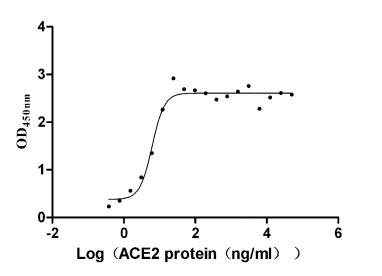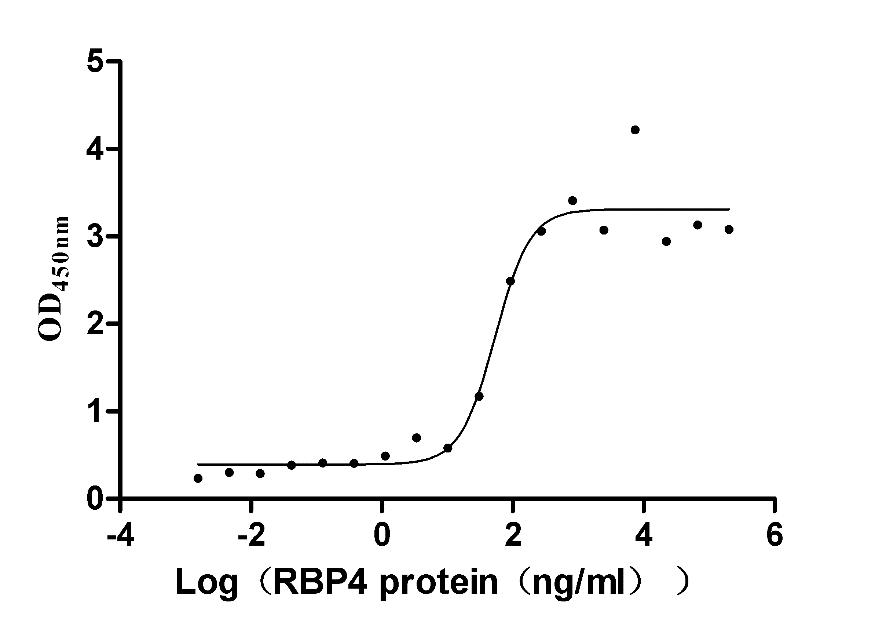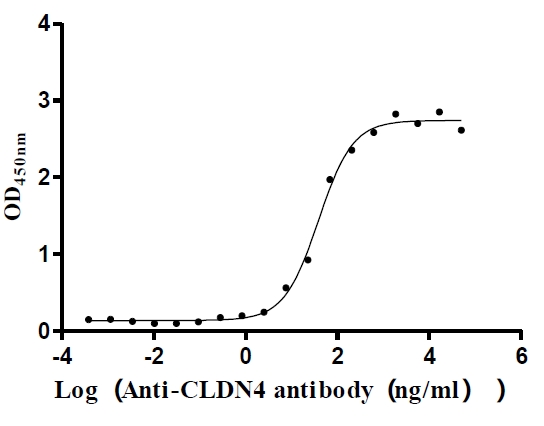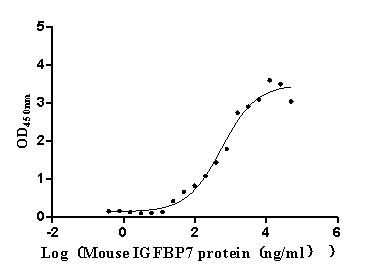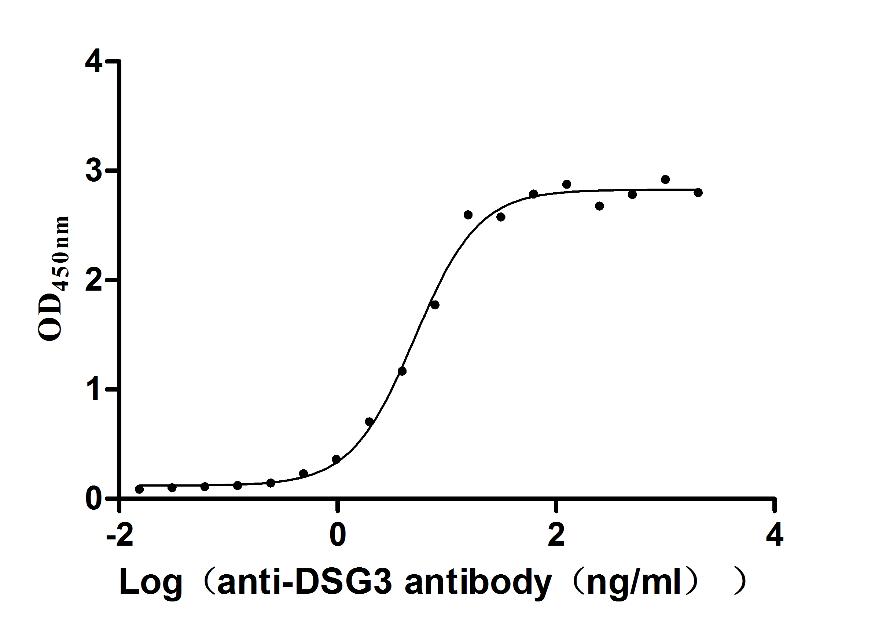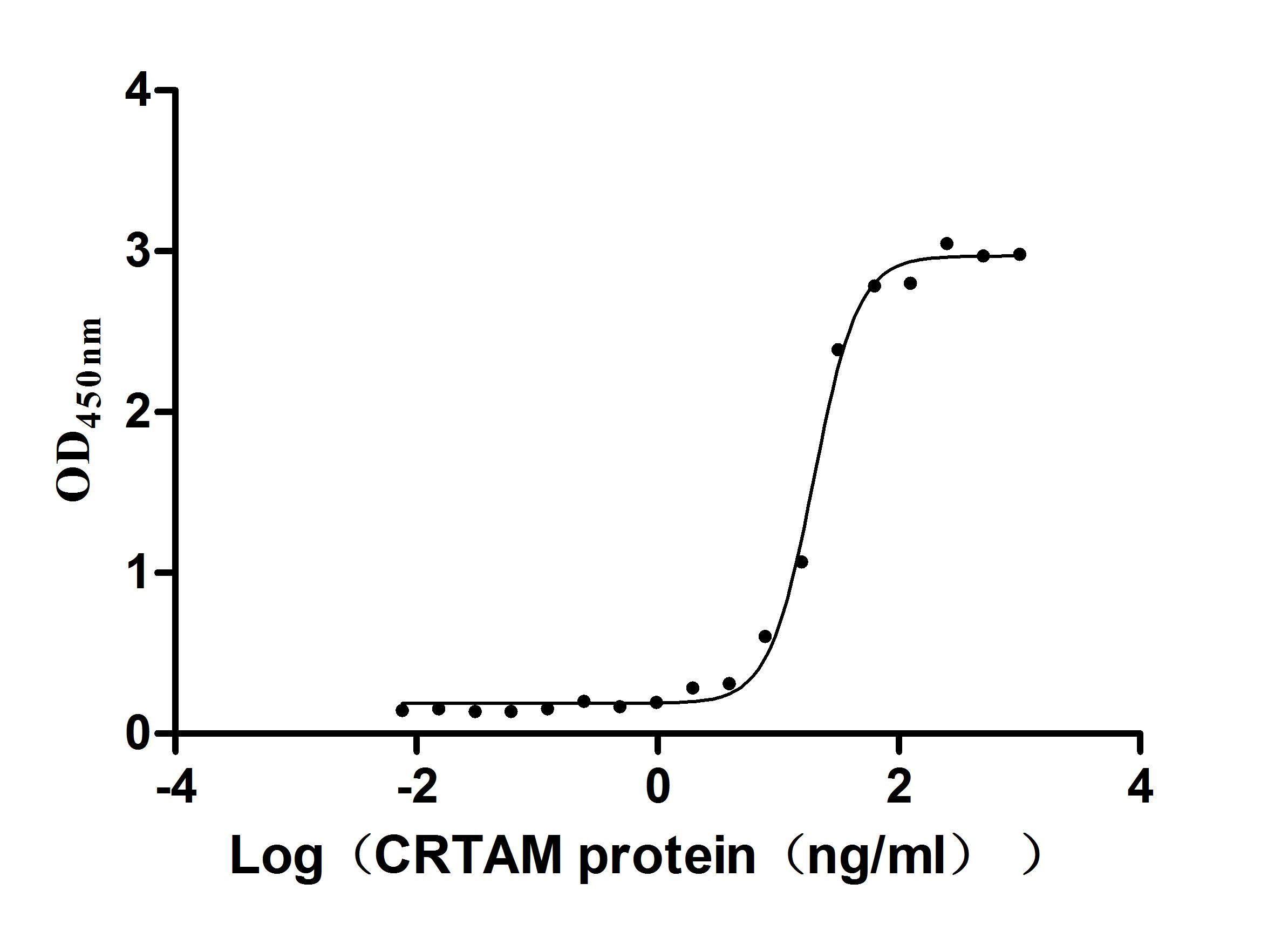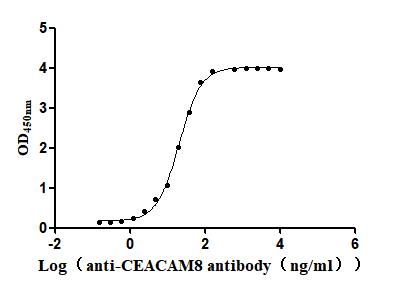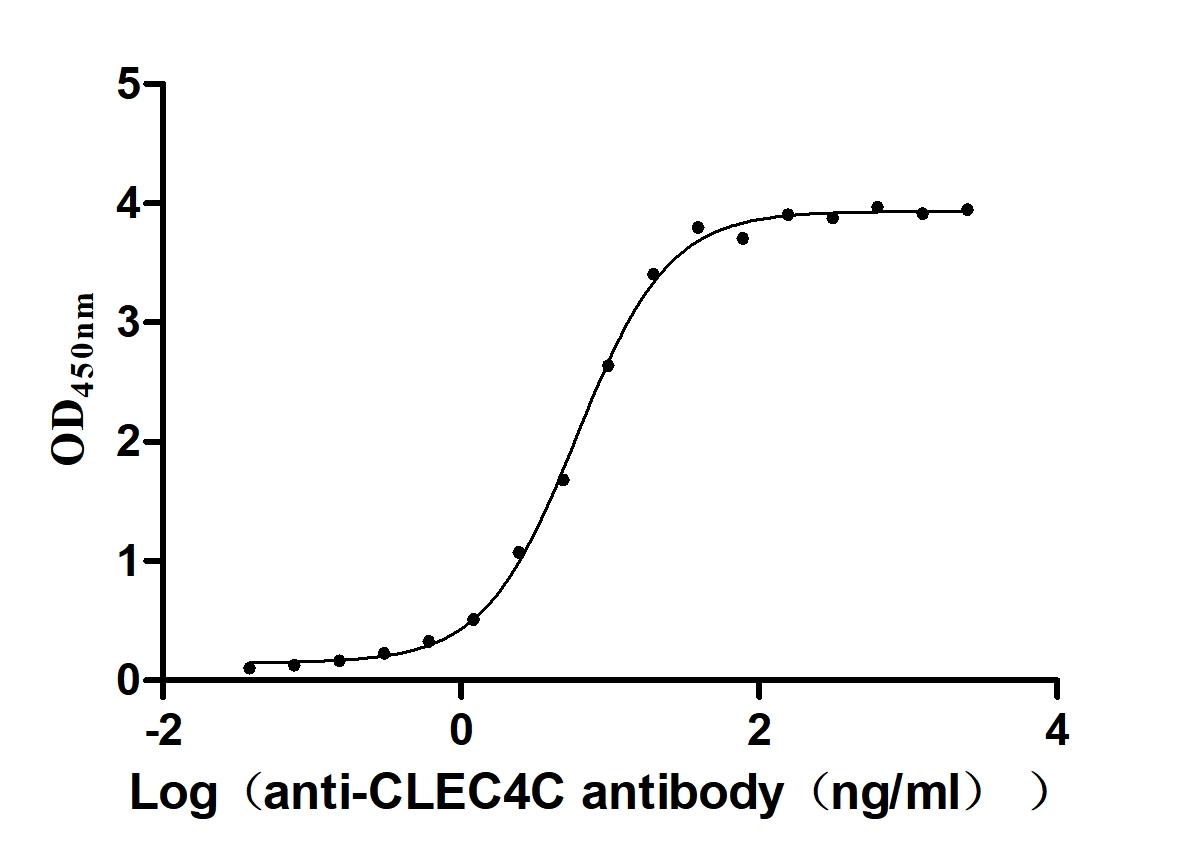Recombinant Saccharomyces cerevisiae Structural maintenance of chromosomes protein 6 (SMC6), partial
-
中文名稱:釀酒酵母SMC6重組蛋白
-
貨號:CSB-EP623648SVG-B
-
說明書:
-
規格:
-
來源:E.coli
-
共軛:Avi-tag Biotinylated
E. coli biotin ligase (BirA) is highly specific in covalently attaching biotin to the 15 amino acid AviTag peptide. This recombinant protein was biotinylated in vivo by AviTag-BirA technology, which method is BriA catalyzes amide linkage between the biotin and the specific lysine of the AviTag.
-
其他:
產品詳情
-
純度:>85% (SDS-PAGE)
-
基因名:SMC6
-
Uniprot No.:
-
別名:SMC6; RHC18; YLR383W; L3502.2; Structural maintenance of chromosomes protein 6; DNA repair protein RHC18; Rad18 homolog
-
種屬:Saccharomyces cerevisiae (strain ATCC 204508 / S288c) (Baker's yeast)
-
蛋白長度:Partial
-
蛋白標簽:Tag?type?will?be?determined?during?the?manufacturing?process.
The tag type will be determined during production process. If you have specified tag type, please tell us and we will develop the specified tag preferentially. -
產品提供形式:Lyophilized powder
Note: We will preferentially ship the format that we have in stock, however, if you have any special requirement for the format, please remark your requirement when placing the order, we will prepare according to your demand. -
復溶:We recommend that this vial be briefly centrifuged prior to opening to bring the contents to the bottom. Please reconstitute protein in deionized sterile water to a concentration of 0.1-1.0 mg/mL.We recommend to add 5-50% of glycerol (final concentration) and aliquot for long-term storage at -20℃/-80℃. Our default final concentration of glycerol is 50%. Customers could use it as reference.
-
儲存條件:Store at -20°C/-80°C upon receipt, aliquoting is necessary for mutiple use. Avoid repeated freeze-thaw cycles.
-
保質期:The shelf life is related to many factors, storage state, buffer ingredients, storage temperature and the stability of the protein itself.
Generally, the shelf life of liquid form is 6 months at -20°C/-80°C. The shelf life of lyophilized form is 12 months at -20°C/-80°C. -
貨期:Delivery time may differ from different purchasing way or location, please kindly consult your local distributors for specific delivery time.Note: All of our proteins are default shipped with normal blue ice packs, if you request to ship with dry ice, please communicate with us in advance and extra fees will be charged.
-
注意事項:Repeated freezing and thawing is not recommended. Store working aliquots at 4°C for up to one week.
-
Datasheet :Please contact us to get it.
靶點詳情
-
功能:Acts in a DNA repair pathway for removal of UV-induced DNA damage that is distinct from classical nucleotide excision repair and in repair of ionizing radiation damage. Functions in homologous recombination repair of DNA double strand breaks and in recovery of stalled replication forks. Probably plays a role in structure.
-
基因功能參考文獻:
- Data suggest that aSmc5/6 likely links rDNA stability to overall mitotic growth. PMID: 29360860
- Our findings reveal a requirement for the Smc5/6 complex, including Mms21/Nse2 mediated sumoylation, and topoisomerase-1 (Top1), for maintaining stability of a chromosome having low origin density and suggest a functional cooperation between the Smc5/6 complex and Top1 in maintenance of topologically challenged chromosomes prone to replication fork collapse or accumulation of torsional stress PMID: 28204881
- Mph1 is a double-edged sword whose action at hybrids must be regulated by the Smc5/6 complex. This is underlined by the observation that simultaneous inactivation of RNase H2 and Smc5/6 results in Mph1-dependent synthetic lethality. PMID: 29281624
- nse3-1/ sir4 Delta double mutants show additive defects for telomere shortening and TPE indicating the contribution of Smc5/6 to telomere homeostasis is only in partial overlap with SIR factor silencing. These findings support a role for Smc5/6 in telomere maintenance that is separate from its canonical role(s) in HR-mediated events during replication and telomere elongation. PMID: 27564449
- The chromosomal association of the Smc5 and Smc6 complex depends on cohesion and predicts the level of sister chromatid entanglement. PMID: 25329383
- Results show Smc5/6 essential roles and reveal that combined defects in DNA damage tolerance and pausing site-replication cause recombination-mediated DNA lesions. PMID: 26698660
- The Smc5/6-Mms21 complex operates as a large SUMO ligase in vivo during DNA repair. PMID: 25764370
- Smc5-Smc6 binds to a Mph1 region required for efficient fork regression, preventing assembly of Mph1 oligomers at the junction of DNA forks. PMID: 25439736
- the Smc5/6 protein complex is directly involved in meiotic recombination and suggest that Smc6 plays a key role in resolving recombination intermediates during meiosis, especially those that form between sister chromatids. PMID: 24244180
- Saccharomyces cerevisiae smc6 mutant survival, upon transient replication stress, can be improved by enhancing Mec1 checkpoint signaling. PMID: 23783034
- Smc5/Smc6 complex binds single-stranded DNA and participates in DNA replication and repair. PMID: 21436624
- Smc5/6 does not simply restrain the recombinogenic activity of Mph1 via direct binding. PMID: 21138837
- Data suggest that the Smc5/6 complex and Esc2 prevent the accumulation of toxic recombination intermediates generated in replication-associated recombinational repair. PMID: 20444977
- hypomorphic smc5 or smc6 alleles exhibit phenotypes similar to mms21 sumoylation-deficient mutants with regard to senescence and the accumulation of unresolved homologous recombination intermediates PMID: 20159973
- Smc6 is involved in a pathway that requires Rad52 to function PMID: 15010319
- The chromosome segregation is impaired in SMC6 mutant because the resolution of rDNA repeats is blocked during anaphase. PMID: 15793567
- results further supporting the importance of Smc5-Smc6 in maintaining the integrity of the repetitive ribosomal DNA (rDNA) locus, the largest repetitive region of the budding yeast genome PMID: 15917663
- Smc5/6-containing complexes have critical roles in both DNA repair and chromosome segregation PMID: 16452135
- Smc5/6 complex is needed during replication to prevent the accumulation of branched chromosome structures. PMID: 16793545
- The Smc5-Smc6 complex is essential for genome stability as it promotes repair of DSBs by error-free sister-chromatid recombination (SCR), thereby suppressing inappropriate non-sister recombination events. PMID: 16892052
- Data show that the Smc5-Smc6 complex and SUMO modification of Rad52 regulates recombinational repair at the ribosomal gene locus in Saccharomyces cerevisiae. PMID: 17643116
- Esc2 and Smc5-6 act in concert with Sgs1 to prevent the accumulation of recombinogenic structures at damaged replication forks, likely by integrating sumoylation activities to regulate the repair pathways in response to damaged DNA PMID: 19158389
- Structural and functional insights into the roles of the Mms21 subunit of the Smc5/6 complex. PMID: 19748359
顯示更多
收起更多
-
亞細胞定位:Nucleus. Chromosome.
-
蛋白家族:SMC family, SMC6 subfamily
-
數據庫鏈接:
KEGG: sce:YLR383W
STRING: 4932.YLR383W
Most popular with customers
-
Recombinant Paguma larvata Angiotensin-converting enzyme 2 (ACE2), partial (Active)
Express system: Mammalian cell
Species: Paguma larvata (Masked palm civet)
-
Recombinant Mouse Retinol-binding protein 4 (Rbp4) (Active)
Express system: Mammalian cell
Species: Mus musculus (Mouse)
-
Recombinant Human Claudin-4 (CLDN4)-VLPs (Active)
Express system: Mammalian cell
Species: Homo sapiens (Human)
-
Recombinant Mouse Complement component C1q receptor (Cd93), partial (Active)
Express system: Mammalian cell
Species: Mus musculus (Mouse)
-
Recombinant Human Desmoglein-3 (DSG3), partial (Active)
Express system: Baculovirus
Species: Homo sapiens (Human)
-
Recombinant Human Cell adhesion molecule 1 (CADM1), partial (Active)
Express system: Mammalian cell
Species: Homo sapiens (Human)
-
Recombinant Human Carcinoembryonic antigen-related cell adhesion molecule 8(CEACAM8) (Active)
Express system: Mammalian cell
Species: Homo sapiens (Human)
-
Recombinant Macaca fascicularis C-type lectin domain family 4 member C(CLEC4C), partial (Active)
Express system: Mammalian cell
Species: Macaca fascicularis (Crab-eating macaque) (Cynomolgus monkey)


